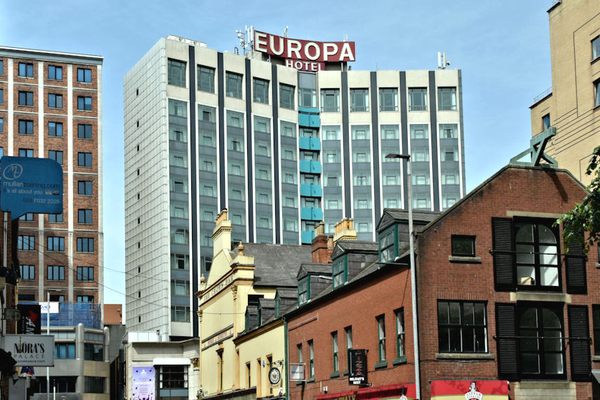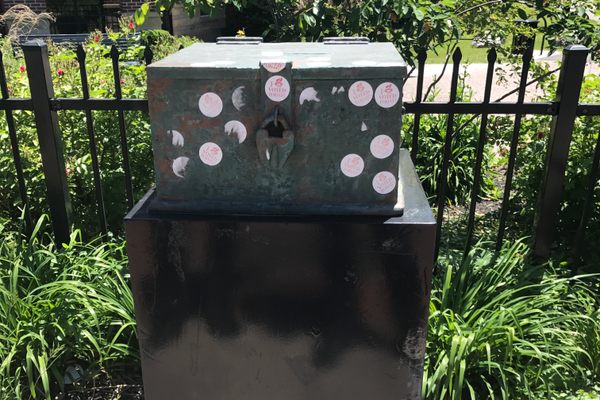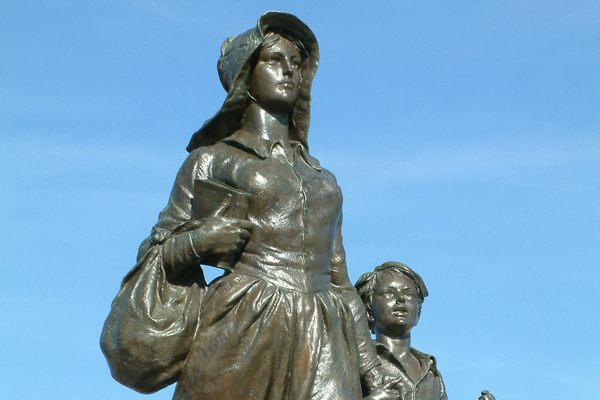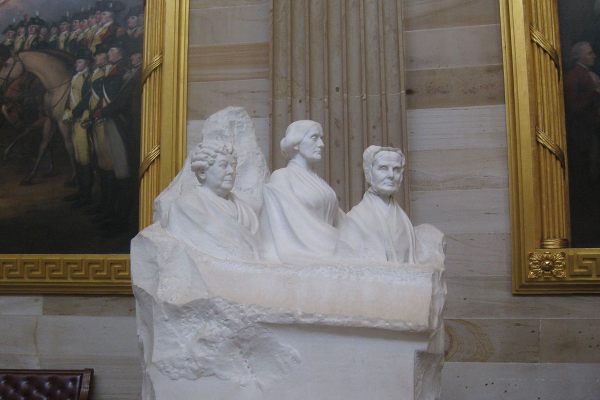Monument to the Unknown Woman Worker
Originally commissioned as a sculpture to reflect the history of Belfast's red-light district, the final sculpture has been banned from Belfast public land.
Two female figures stand side-by-side, the matronly one on the left seeming to offer comfort to the shorter, smaller woman who is holding her arm as she looks downward. Woven throughout the figures are symbolic items that reflect common tools of typical women’s professions. A basket covers the belly of the older woman, with the handle weaving in and out of her breasts. Her earrings are pacifiers, or “dummies,” in the United Kingdom. A hanger makes up her shoulder blades, while a slotted spatula and colander protrude from her buttocks. The younger woman has multiple hairbrushes on her head, a telephone on her chest with its receiver placed along her arm, and a typewriter positioned just below her belly.
Along with the images are various statements about women and the work they do. One of these statements reads: “Almost 10% of women working for income in NI are part-time workers. These woman area almost always badly paid. They work without health benefits, holiday entitlements, or pension schemes.” Another states that “Women do two-thirds of the world’s work, receive only two percent of the world’s income and own less than one percent of the world’s assets.”
The sculpture by artist Louise Walsh was conceived in response to Belfast’s City Council’s invitation to a competition to design a statue depicting sex workers in order to honor the history of nearby Amelia Street as a red-light district. The council provided a drawing as an example. Walsh, one of four invited artists, later described the drawing as provocative, cartoony, and degrading in the way the sex workers were depicted. She was frustrated with the idea that young women being portrayed in such a sculpture would be diminished or deprecated for deciding to work in this profession as a means of financial survival for themselves and their families. In addition, the piece would display a narrow view, overlooking the more diverse social history of the area. This area of Belfast was densely populated, with residents working in numerous types of employment, including at the linen factories.
After much thought, Walsh decided to make a wider political statement with her proposal. Modeling the name of her work after the “Unknown Soldier,” her conception was meant to appreciate and celebrate the innumerable women who work day in and day out in unpaid or low-paying jobs with few benefits, doing work that often results in unacknowledged contributions.
Walsh’s design was chosen by the Art in Public Spaces Research Group but was opposed by both the Belfast Development Office and the Belfast City Council. This opposition prompted the longest-ever debate of the Belfast City Council. Due to objections, protests, and politics surrounding the accepted proposal, the sculpture was banned and the project itself was cancelled in 1989. Interestingly, the ban itself reinforced Walsh’s concept about who should get acknowledged and how often ordinary women are not worthy of recognition. The sculpture was erected in 1992 after a private developer decided to provide the funds and land for the work.
Know Before You Go
The statue can be visited just off the sidewalk outside the Europa hotel and across the street from The Crown Liquor Saloon.

















Follow us on Twitter to get the latest on the world's hidden wonders.
Like us on Facebook to get the latest on the world's hidden wonders.
Follow us on Twitter Like us on Facebook